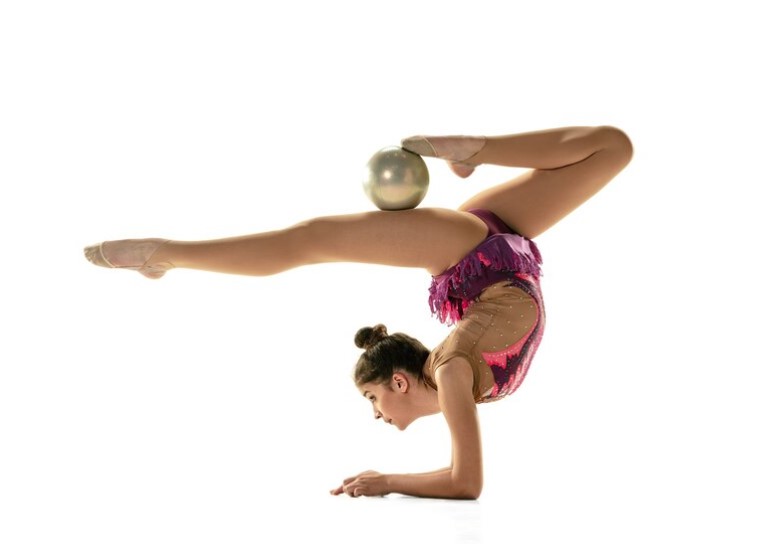The Ins and Outs of Tumbling Gymnastics

Tumbling gymnastics is a dynamic and artistic sport that involves performing acrobatic movements and figures without apparatus. In this article, we will explore the basics of tumbling, including its history, common skills and techniques, competition categories, training practices, injury prevention, and tips for beginners interested in the sport.
History and Origins
Tumbling origins can be traced back thousands of years to ancient China, where acrobatics and gymnastics were performed as early as 2000 BC. During the Han Dynasty, acrobatics were incorporated into military training to enhance soldiers’ physical abilities. Later, tumbling became popular as a circus act and form of entertainment in the 19th century. Skills like somersaults, handsprings, and flips dazzled audiences. It was eventually incorporated into formal gymnastics routines and training in the early 20th century as the sport became more codified and competitive. Tumbling was first included in major international gymnastics competitions like the Olympics in 1932. Since then, it has continued to evolve as an important event in artistic gymnastics, along with apparatuses like the balance beam, uneven bars, and vault.
| Event | Year Added |
|---|---|
| Olympics | 1932 |
| World Championships | 1934 |
| Pan American Games | 1955 |
| European Championships | 1957 |
Basic Skills and Techniques
Tumbling requires gymnasts to perform skills ranging from simple rolls and walkovers to more advanced aerial twisting and somersaulting maneuvers, all without the use of equipment. Key basic skills include the cartwheel, roundoff, handstand, walkover, dive roll, and aerial cartwheel. These establish strength, flexibility, balance, and the foundational techniques required. As gymnasts advance, they work on connecting skills into tumbling passes across the floor, incorporating saltos (flips), twists, and multiple flips in a row. Aerial awareness, timing, coordination, and speed help execute these difficult combinations. Proper technique, body control, strength, and flexibility are critical throughout tumbling progressions. Spotting, focusing on a point ahead, helps gymnasts maintain spatial awareness and control while flipping and twisting midair.
Competitive Categories
In competitions, tumbling skills are performed and evaluated on a spring exercise floor mat. Key categories include:
- Tumbling: Focused solely on execution of acrobatic passes and skills
- Individual Trampoline: Routines with skills on a trampoline
- Double Mini Trampoline: Flips off a mini trampoline onto a landing mat
- Tumbling Team: Group synchronized tumbling routines
- Tumbling Relay: Teams take turns tumbling down the floor Judges look for difficult, creative routines executed with excellent form, height, control, and precision. Fails and flaws lead to point deductions.
Training Practices
Tumbling requires immense conditioning and training to build the necessary skills. Gymnasts follow rigorous regimens to develop strength, flexibility, coordination, balance, and technique. Plyometrics, weight training, core exercises, and specialized apparatus are incorporated. Drills improve aerial control and awareness. Proper progressions under the guidance of coaches allow skills to be acquired safely. Significant time, discipline, and gradual advancement are required to reach elite levels.
Injury Prevention
Due to the high-impact nature of tumbling, injuries are a potential risk. However, steps can be taken to enhance safety. Proper skill progressions, coaching, padded flooring, and spotters are essential. Learning how to fall and roll properly can reduce injuries if mistakes occur. Ankle braces, tape, knee pads, and grips help support gymnasts during training. Developing the strength, flexibility, and form required for skills minimizes injury risk.
Tips for Beginners
Those new to tumbling should start by building strength, flexibility, and proper form through fundamental skills before advancing. Finding an experienced coach, starting on appropriate mats, learning proper fall techniques, and using spotters minimizes injury risk. Drills to improve spatial awareness, working with a spotter, and learning to bail out of skills are also key. Progressing gradually allows skills to be performed with solid technique and body control. With patience and proper training, the foundations can be laid for tumbling excellence.
To conclude, with its blend of athleticism, artistry, and acrobatics, tumbling is an exciting form of gymnastics. Mastering aerial maneuvers, body control, and complex skills takes immense practice, conditioning, and discipline. But the beauty of tumbling is worth the effort for many athletes drawn to this captivating sport. With the right training and progression, tumblers can reach new heights and turn their love of acrobatics into a fulfilling competitive or recreational pursuit.